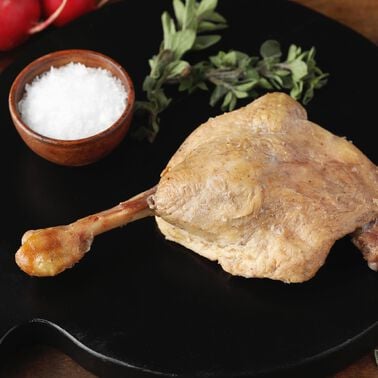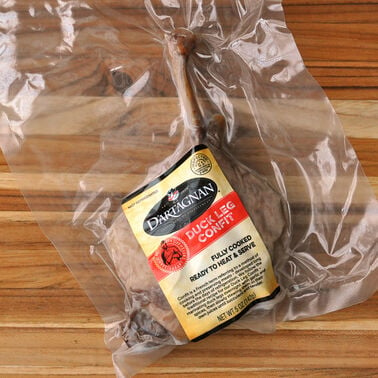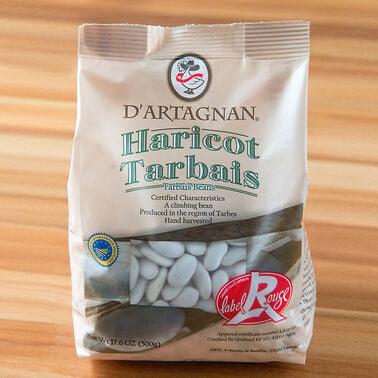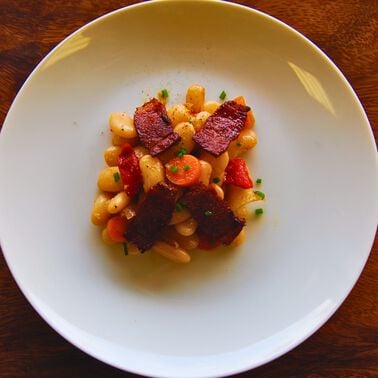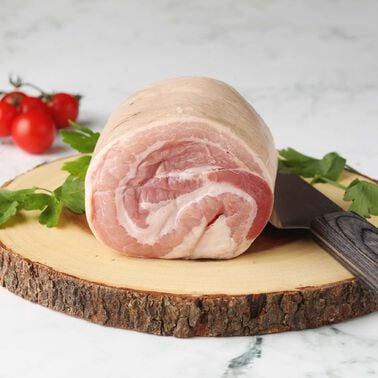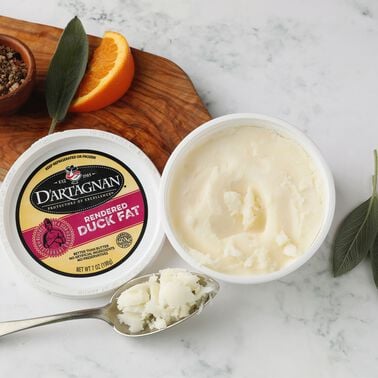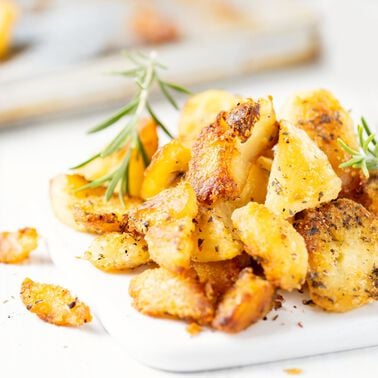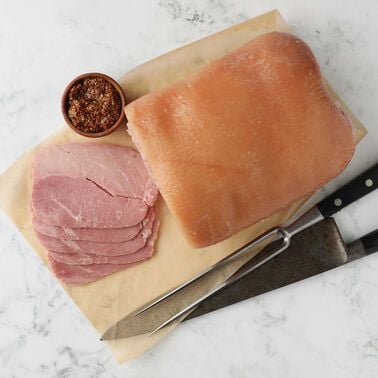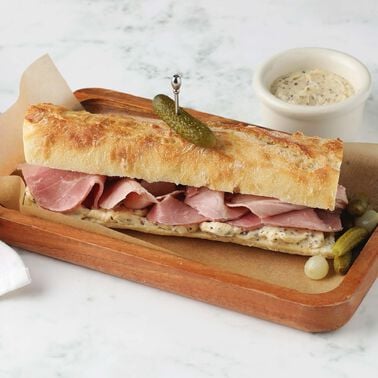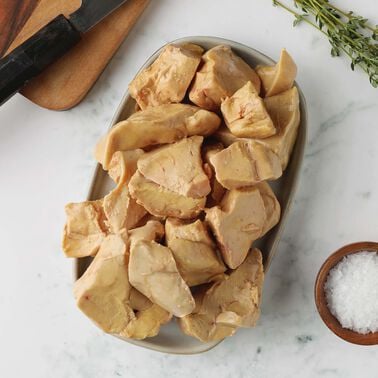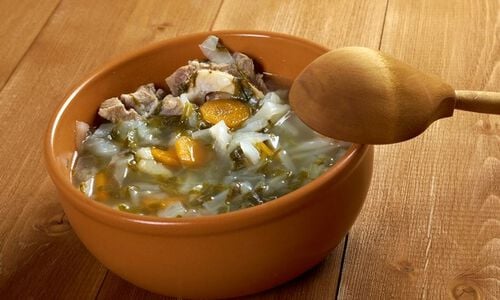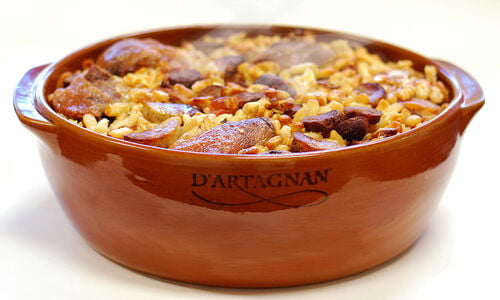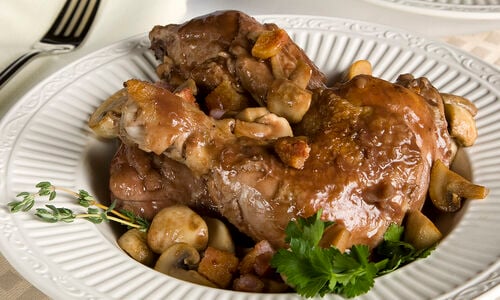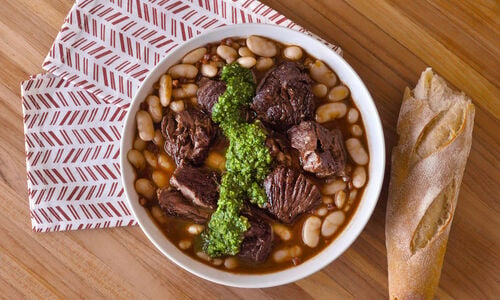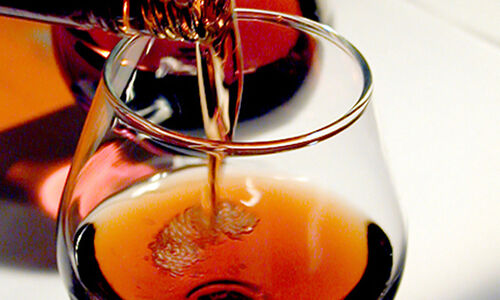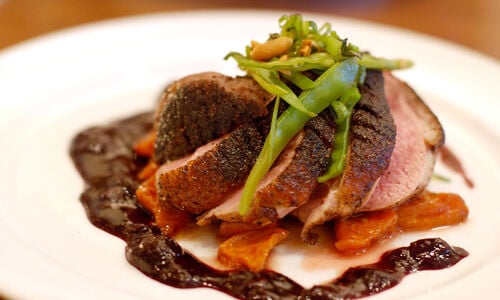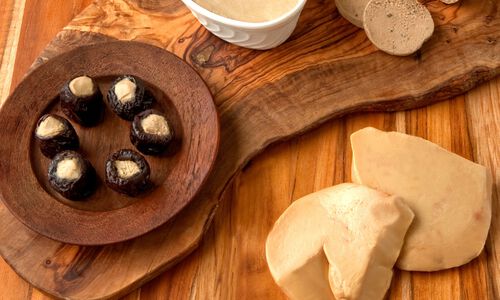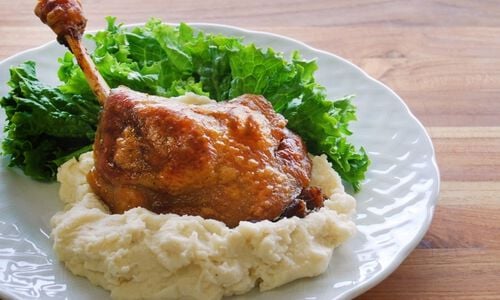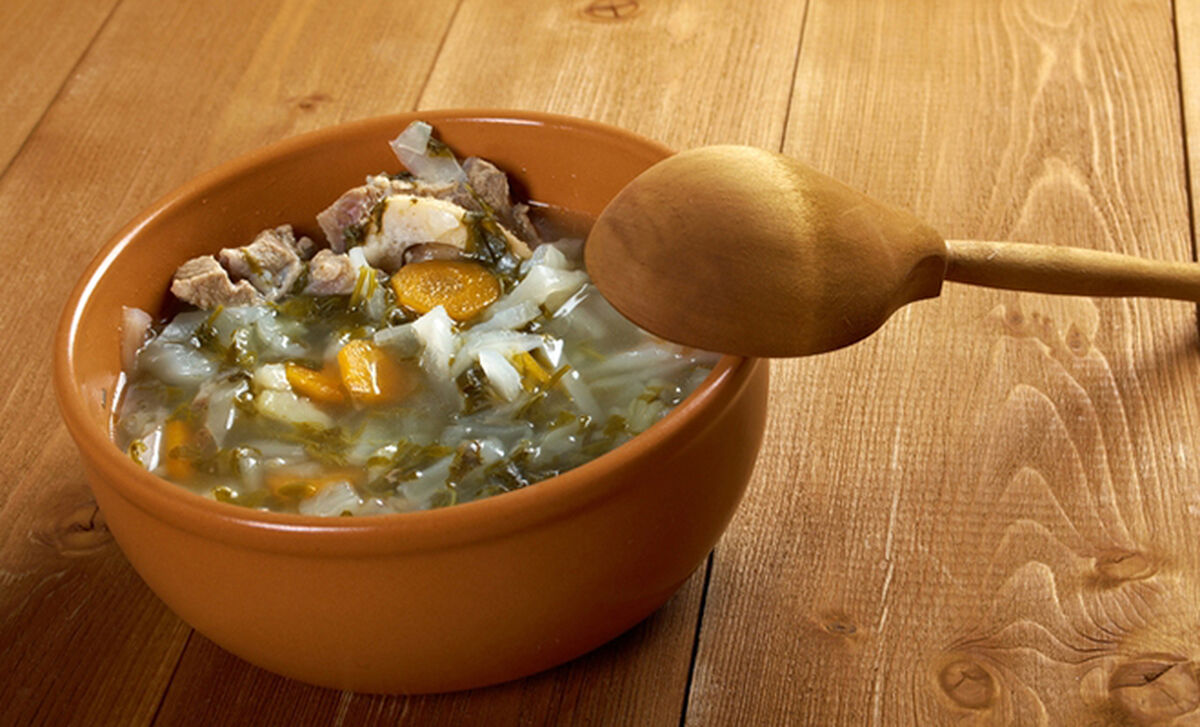
Living Off the Land
This much-celebrated soup is incredibly thick with a variety of tender slow-cooked vegetables and savory preserved meats such as delectable shreds of succulent duck confit, rich smoky ham, and tasty pieces of the salt-cured French pancetta – ventrèche. Pure and simple, garbure is honest French country cooking that nourishes and deeply satisfies.
It is also a dish shaped by readily available local ingredients, and since Gascony is so vast, there are an endless number of variations and embellishments. This soup is made year-round, which means the character changes with the seasons as well. For instance, in autumn flavorful grilled chestnuts and beautiful Savoy cabbage may be in the pot; and in winter root vegetables and sweet, creamy fleshed haricots Tarbais, which were allowed to dry slowly on the vine. When spring arrives you will find garbure made with fava beans or the tender second shoots of young cabbages, and in summer perhaps bright tomatoes and roasted red peppers.
The Meat of the Subject
Even though there is not a single definitive recipe, certain regional ingredients are essential to impart the characteristic flavors of southwestern France. For example, duck stock enhanced with thick pieces of ventrèche, and the rind of prosciutto or bone from an aged Jambon de Bayonne; or stock from meaty ham hocks and a mixture of aged pork fatback minced with garlic and herbs. Also, duck and sometimes goose fat make the stock rich, and of course duck gizzards and even prized foie gras, which make it velvety and richer still.
Better and Better
It is said that a proper garbure should be so thick that a wooden spoon placed in the center of the pot will stand on its own. It is also customary to cook and refrigerate garbure three to four days in advance of serving to allow the flavors to develop and mellow, but it does not stop there. The flavors continue to ripen and improve even beyond that. So much so that as the garbure diminishes, more vegetables, meat, and broth are often added to keep the pot going. When this is done, the flavors just keep getting better.
How Would You Like That
As an evening meal, garbure may be served in two courses; the meat is taken out and kept warm, to be served as the main course sometimes with cornichons, capers, or pickled hot peppers. The steamy broth is then served first, ladled into soup bowls over thick slices of rustic bread. There is also a gratinéed version called a panade, made with layers of the boned duck, cooked vegetables, and bread; all moistened with broth, topped with Cantal cheese, and baked in an earthenware dish until the cheese is melted and golden brown. Of course, to eat a bowl of garbure with just a glass or two of red wine and a loaf of freshly baked bread is to enjoy it in its most pure form.
A Fitting End
It is traditional to make chabrot with garbure. This is is a ritual complement and a wonderful way to finish the soup. When nearing the last of the rich tasty broth, one pours a little red wine into the soup plate – in a portion about equal to the remaining broth. You then abandon the spoon, give the dish a gentle swirl or two, and drink this ambrosia in little mouthfuls directly from the soup plate to savor every drop. Elbows on the table, please.
